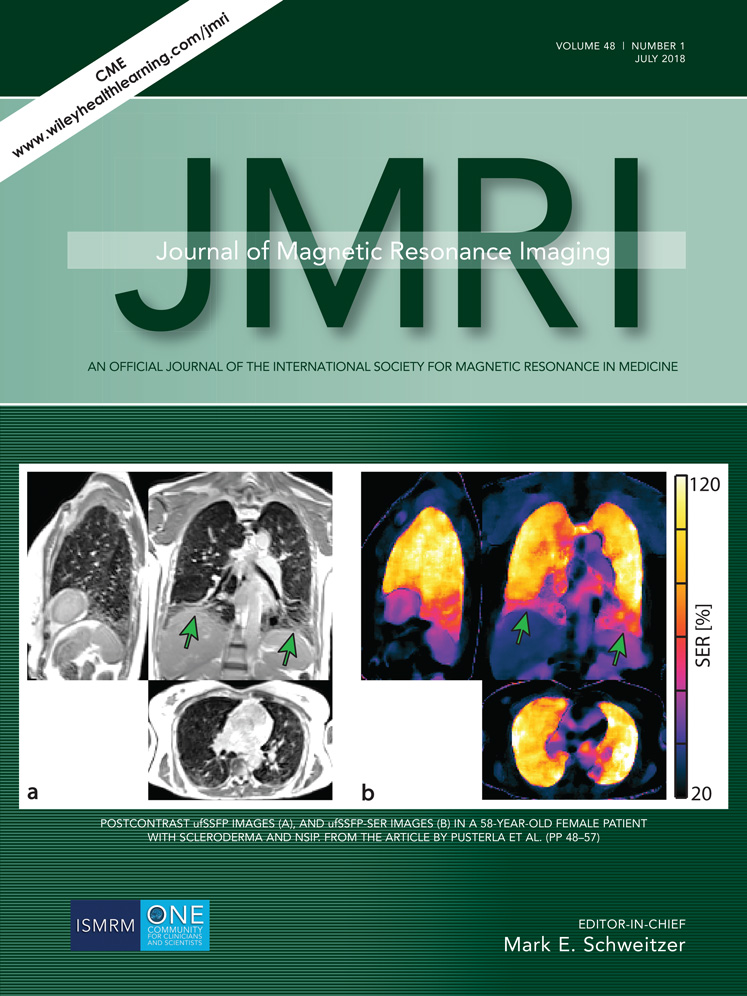Reproducibility of relaxometry of human lumbar vertebrae at 3 Tesla using 1H MR spectroscopy
Abstract
BACKGROUND
MR spectroscopy is widely used for fat fraction quantification of human lumbar vertebrae. However, the measurements need to be corrected for relaxation effects.
PURPOSE
The aim of this study was to determine the reproducibility of relaxometry in human lumbar vertebrae required for the correction of fat fraction measurements using magnetic resonance spectroscopy at 3 Tesla. Such information provides error estimates and guidance regarding reliability for future studies.
STUDY TYPE
Prospective.
SUBJECTS
Forty-six healthy volunteers (22 female [f], 24 male [m]) participated in this study.
FIELD STRENGTH
All subjects underwent three consecutive multi-TE/multi-TR MR spectroscopy measurements at 3 Tesla.
ASSESSMENT
A total of 2580 spectra of lumbar vertebrae L2 and L3 of 43 subjects (21f, 22m) were quantified using jMRUI software. Data were exported and mono-exponential fits were applied to the signals of water and fat compartments to derive relaxation times and calculate the fat fraction corrected for relaxation effects. Finally, relaxation times and fat fraction results of repeated measurements were analyzed for reproducibility.
STATISTICAL TESTS
Reproducibility was evaluated by calculating the coefficient of variation (CV). Influences of volunteer age and sex were tested by analysis of covariance.
RESULTS
The CV for all calculated parameters ranged between 1.22% (T2 of the fat compartment) and 3.02% (T1 of the fat compartment). Relaxation times and fat fraction were statistically different for female and male volunteers (P < 0.01) and relaxation times of the water compartment showed significant (P < 0.01) correlation with the fat fraction.
DATA CONCLUSION
Based on repeated acquisitions using the measurement parameters applied in this study, magnetic resonance spectroscopy allowed a reproducible calculation of the fat fraction corrected for relaxation effects. T1 of the water compartment showed high reproducibility and correlation with the fat fraction. It, therefore, might be considered as a parameter linked to the composition of the water compartment and patient health.
Level of Evidence: 1
Technical Efficacy Stage 1
J. Magn. Reson. Imaging 2017.




